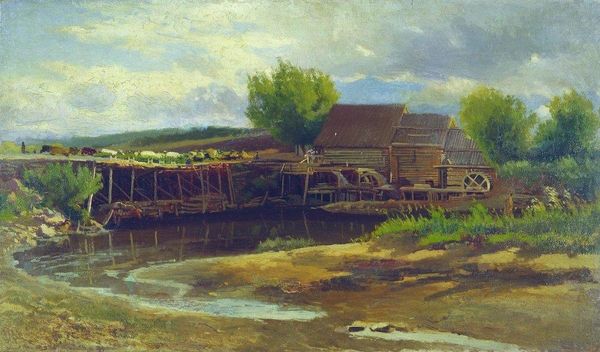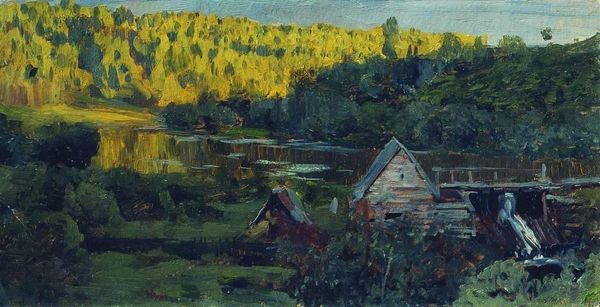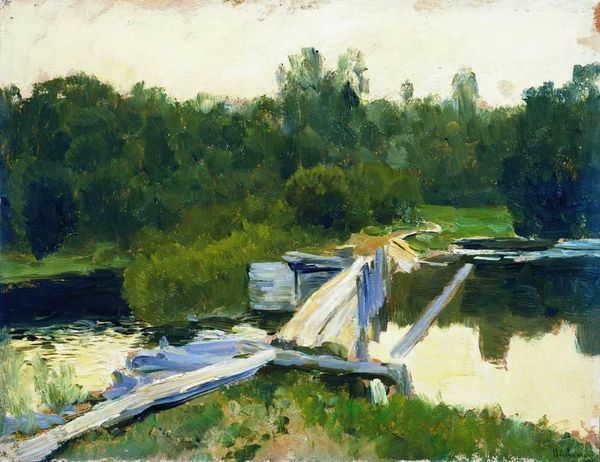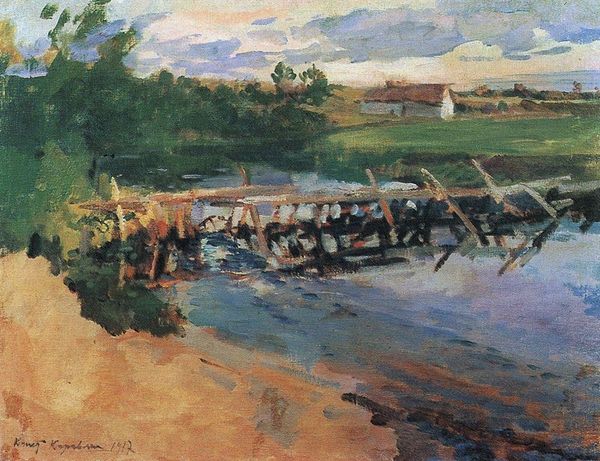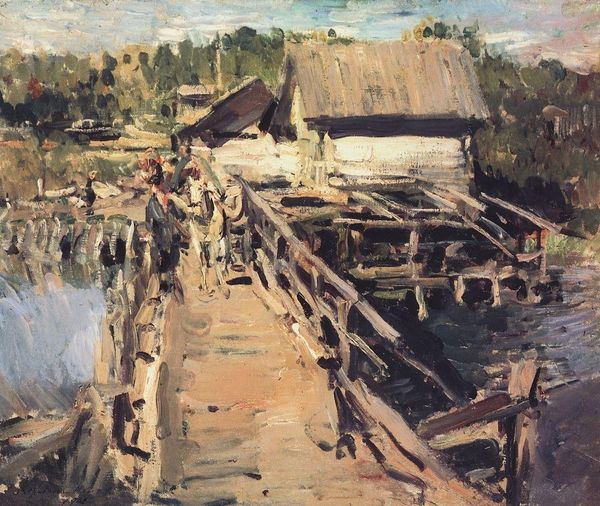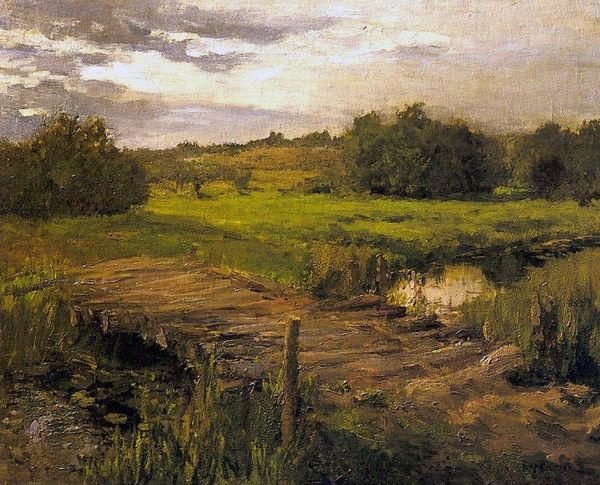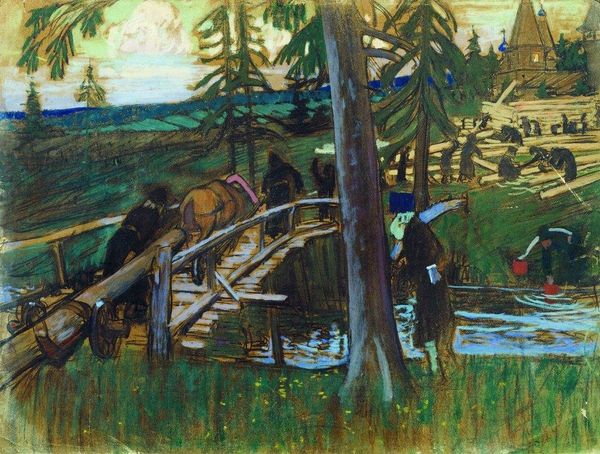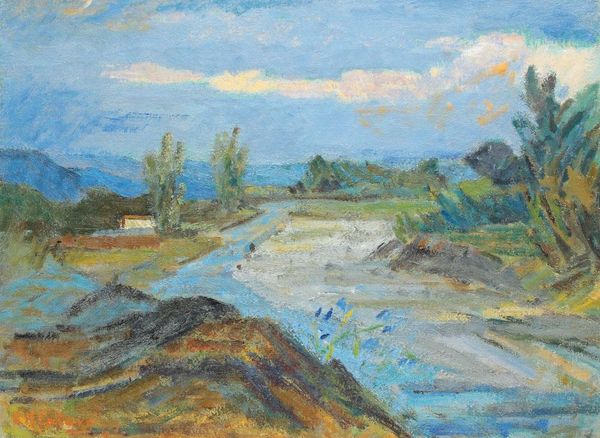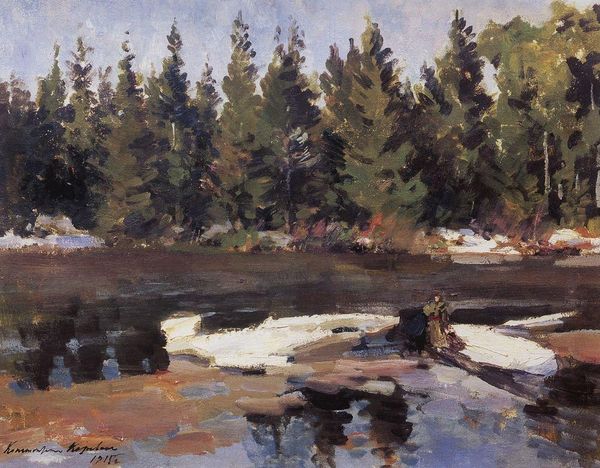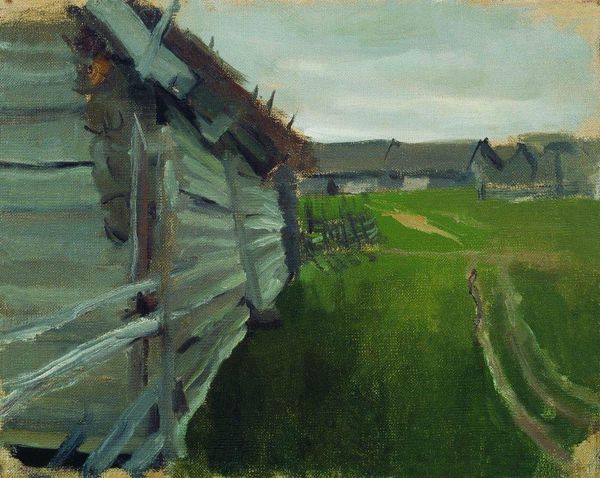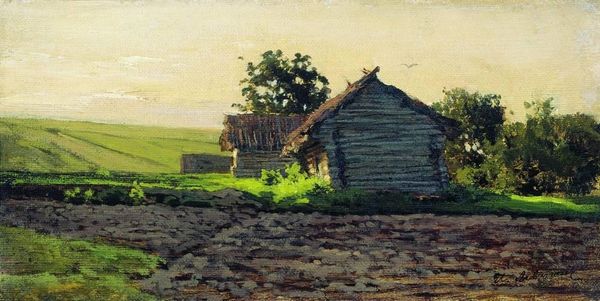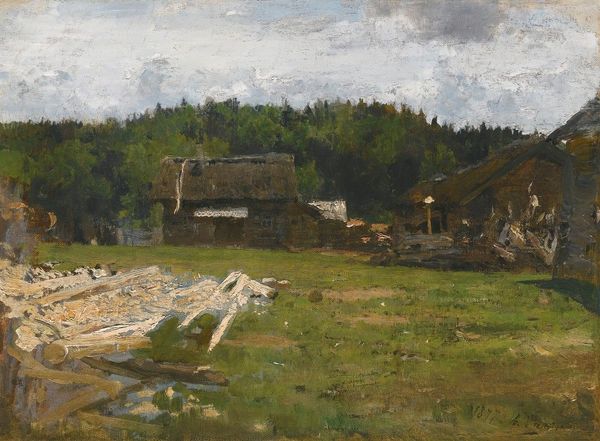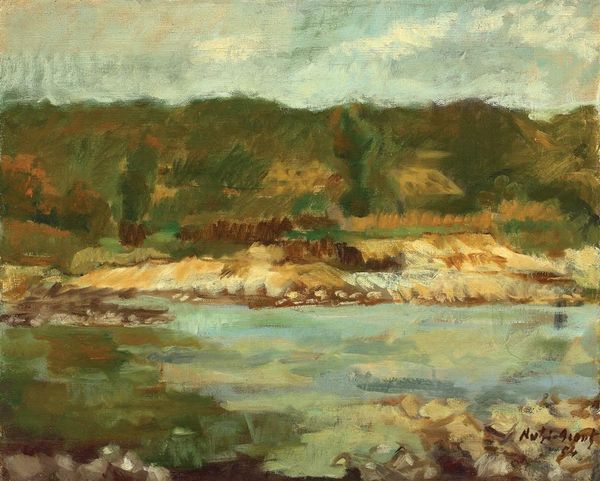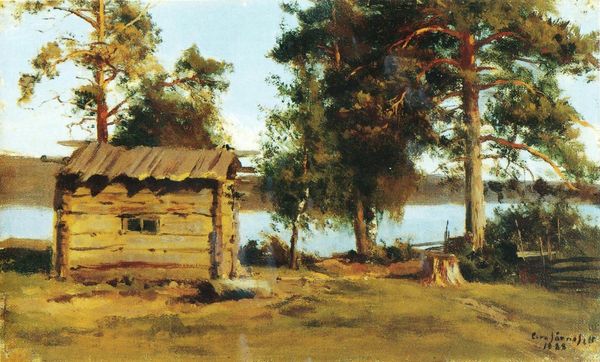
painting, oil-paint
#
painting
#
oil-paint
#
landscape
#
river
#
oil painting
#
geometric
#
post-impressionism
#
modernism
Copyright: Public domain
Curator: It's incredibly atmospheric. I find a sense of melancholy in the muted color palette. What do you think? Editor: This is "Pavlov's Mill on the River Yahrust," a painting made in 1905 by Boris Kustodiev. We see a quiet landscape—the titular mill on the edge of a river, all captured in oil on canvas. The brushstrokes have an almost hazy quality, wouldn't you agree? Curator: Definitely. The subdued color choices contribute significantly. I am interested in its depiction of rural Russia at a critical moment of social and political change. Mills like this weren’t simply parts of the landscape; they represented a way of life on the cusp of disappearing with industrialization and modernization. What social strata did these structures represent at this moment of flux? Editor: Precisely! And that perspective reflects the rising Post-Impressionist style, moving beyond pure impression to infuse landscapes with social context and commentary. Kustodiev, like many of his contemporaries, used art to portray and examine the realities of a changing society. It's more than just a picturesque scene, isn't it? This also considers that artistic societies—and artistic institutions—may still place great stock on traditionally conservative subjects and scenes, further reflecting how this movement negotiates Russian politics. Curator: Absolutely. Consider the title, too. "Pavlov’s Mill" centers a specific place, and thus a specific narrative tied to its location and likely to its laborers. And you have a good point. Its commitment to Post-Impressionism—while it incorporates aspects of modernism—remains invested in artistic legacy as it reckons with shifts in Russian identity and culture. I'm now wondering about issues such as ecological balance, resource ownership and, most of all, collective experience that is suggested through Kustodiev’s visual language and medium. Editor: An incisive analysis. When we view this piece, especially as members of an increasingly globalized society, we witness art acting as witness to societal transformations while the old order gives way to new paradigms. Kustodiev compels the contemporary audience to remember, rethink, and reimagine a rural life and community. Curator: So it becomes a historical document imbued with artistic vision, subtly critiquing the present by preserving a sense of the past and gesturing to the future, thus raising further discussions around how modernity can take hold on historically entrenched ways of life. Editor: A very apt way to consider it!
Comments
No comments
Be the first to comment and join the conversation on the ultimate creative platform.
